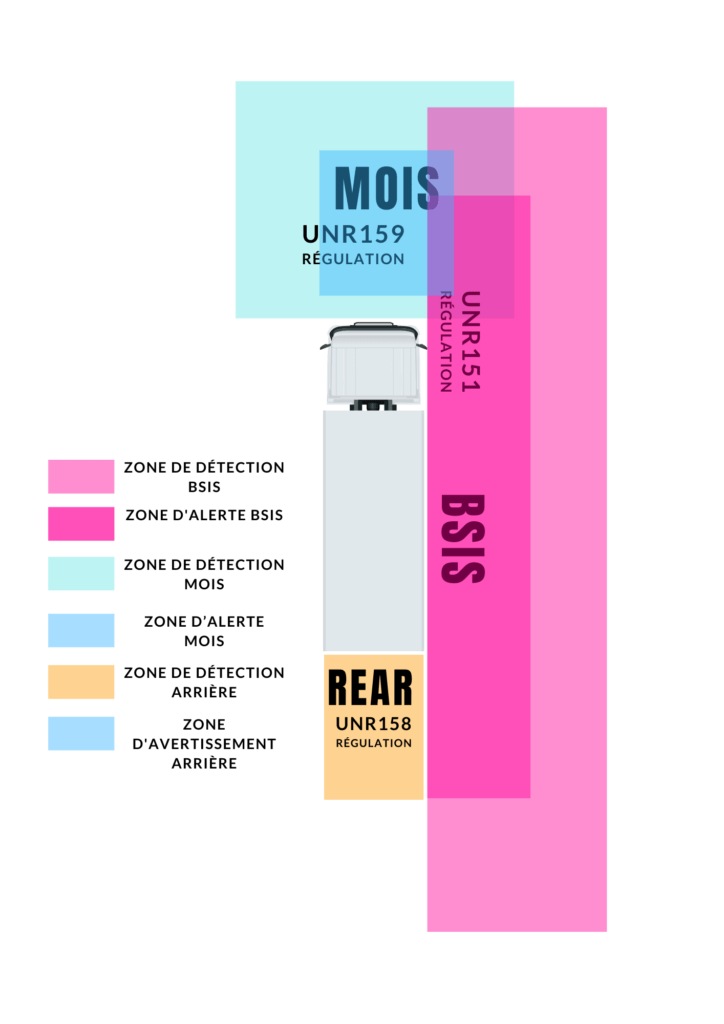ALL YOU NEED TO KNOW ABOUT GENERAL SAFETY REGULATION GSR2
What is the GSR?
The General Safety Regulation (GSR) is a comprehensive set of safety standards specifically designed for heavy-duty vehicles within the European Union (EU). This regulation mandates various requirements aimed at enhancing road safety by integrating advanced safety technologies and improving the design of truck cabins. According to the EU, these new regulations are projected to save over 25,000 lives and prevent at least 140,000 serious injuries by 2038.
Vehicles Affected by the GSR
The GSR applies to EU trucks with a gross vehicle weight exceeding 3.5 tonnes. This encompasses a wide range of commercial vehicles such as goods transport trucks, delivery vans, buses, and coaches.
- M2 – Passenger Transport
- More than 8 seats in addition to the driver’s seat
- Vehicle weight less than 5 tonnes
- M3 – Passenger Transport
- More than 8 seats in addition to the driver’s seat
- Vehicle weight exceeding 5 tonnes
- N2 – Goods Transport
- Weight between 3.5 tonnes and 12 tonnes
- N3 – Goods Transport
- Weight exceeding 12 tonnes
Key Notes
- The GSR covers all new heavy-duty vehicles sold within the EU, regardless of their manufacturing location.
- It also applies to trucks imported into the EU from other countries.
R151 Blind Spot Information System (BSIS)

BSIS is an advanced vehicle safety system that employs sensors, cameras, and intelligent algorithms to detect and monitor the blind spots on the passenger side of the vehicle. This aids drivers in avoiding potential collisions with cyclists hidden from their direct line of sight.
Regulatory Requirements:
- Monitoring the passenger-side blind spot to prevent collisions with cyclists.
- Applicable to all class N and M vehicles traveling between 0 and 30 km/h.
- Alerting the driver to the presence of a cyclist via optical, acoustic, haptic, or combined signals.
R158 Rear Visibility and Detection System

Rear-view devices assist drivers during reversing or parking maneuvers by providing visual and auditory information about nearby objects or obstacles, enhancing safety.
Regulatory Requirements:
- Monitoring the rear of the vehicle to prevent rear-end collisions.
- Applicable to class M2, M3, N2, and N3 vehicles.
- Activated when selecting reverse gear.
- Range of 0.2 m to 3.5 m behind the vehicle, depending on rear visibility or detection.
- Alerting the driver via acoustic, optical, or haptic signals.
R159 Moving Off Information System (MOIS)

MOIS detects and informs the driver of the presence of pedestrians and cyclists in the immediate vicinity of the front of the vehicle, alerting them to potential collision risks while minimizing false alarms.
Regulatory Requirements:
- Monitoring the front blind spot to prevent collisions with pedestrians or cyclists.
- Applicable to class M2, M3, N2, and N3 vehicles traveling between 0 and 10 km/h.
- Alerting the driver to the presence of a cyclist or pedestrian via optical, acoustic, haptic, or combined signals.
- Detection range of 80 cm to 3.7 m in front of the vehicle (total of 4.5 m), with a minimum detection width of 4.3 m.






